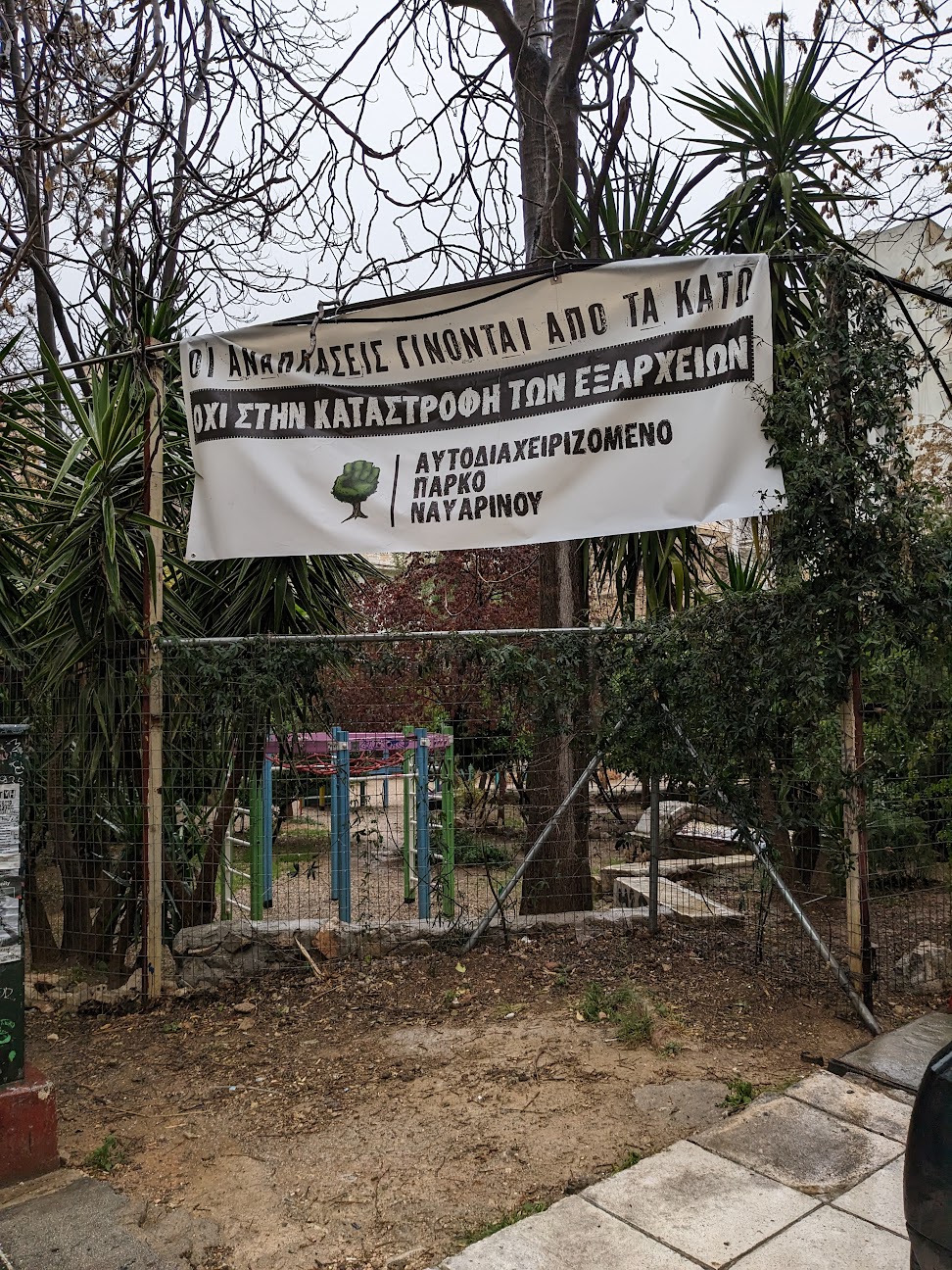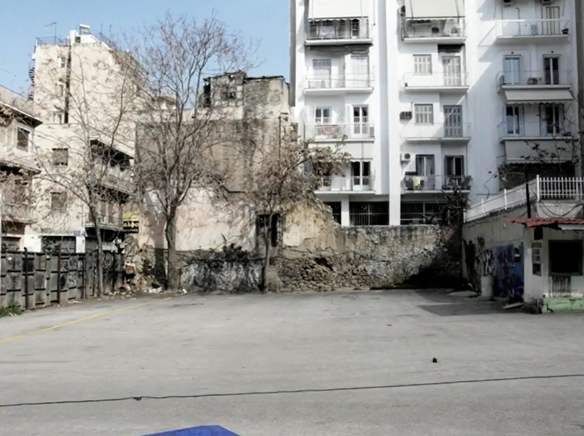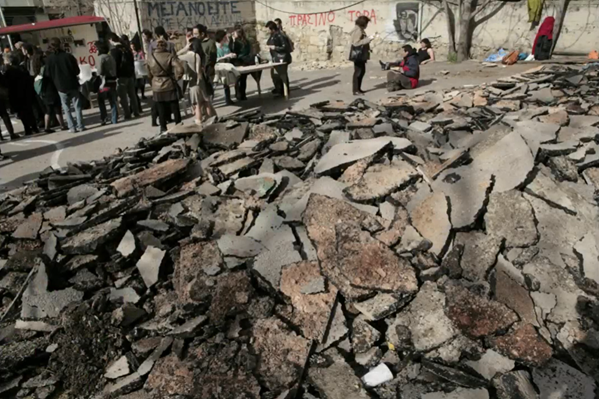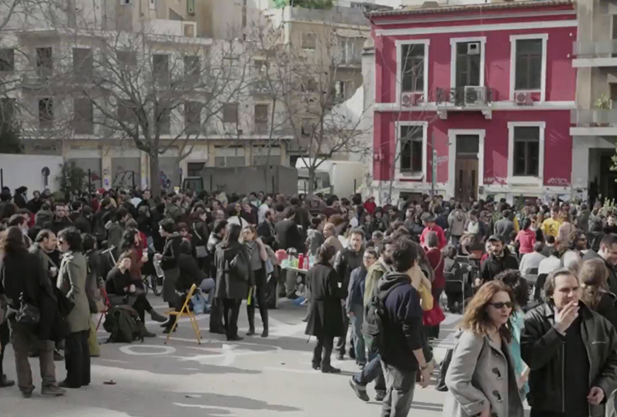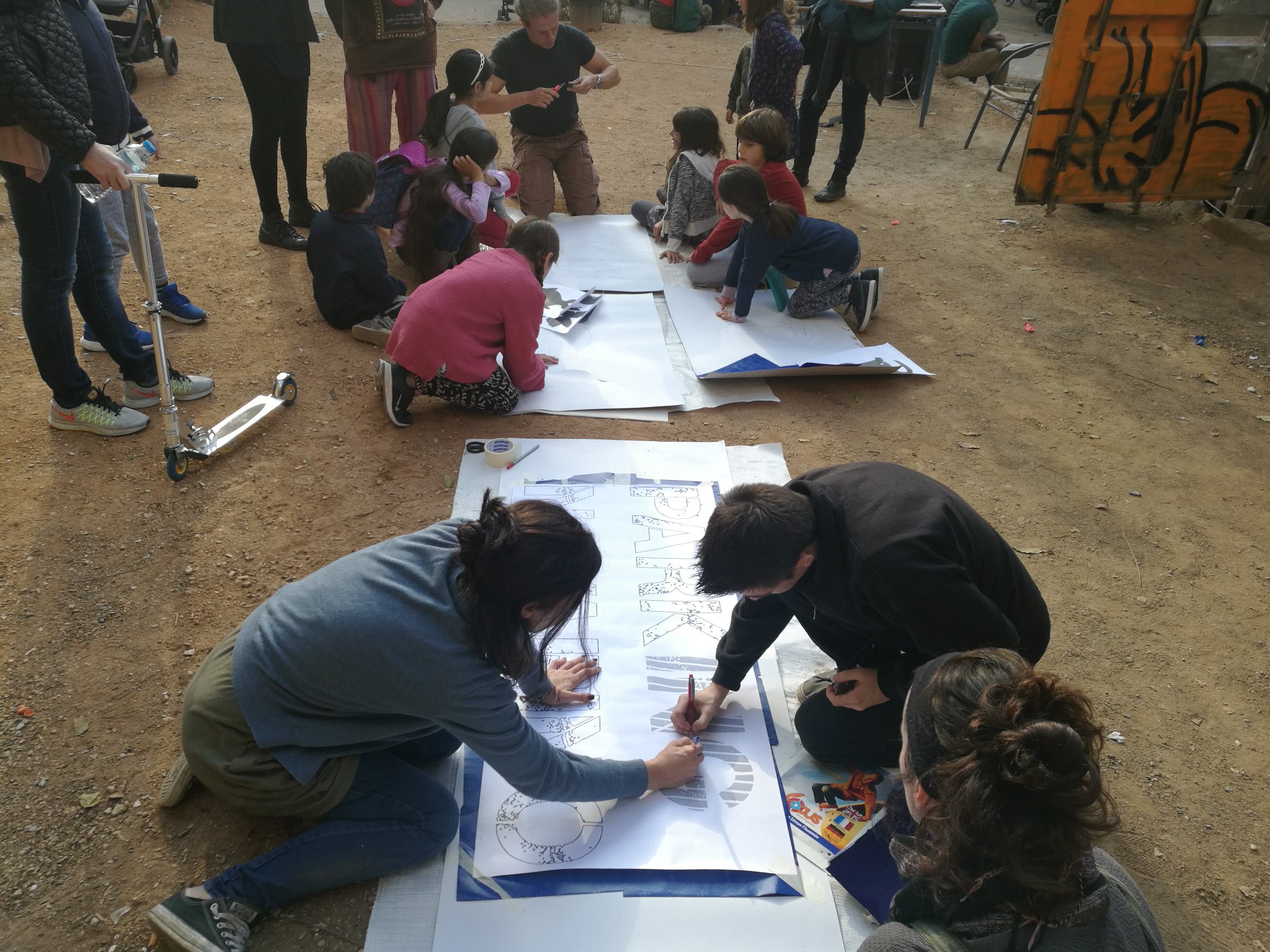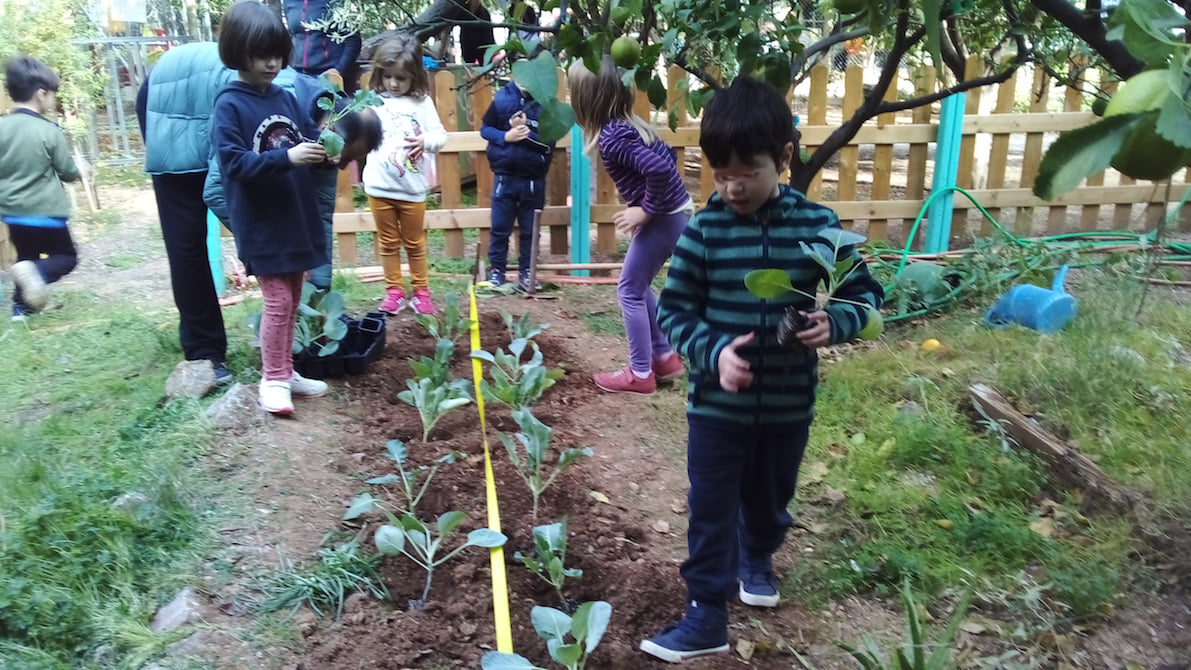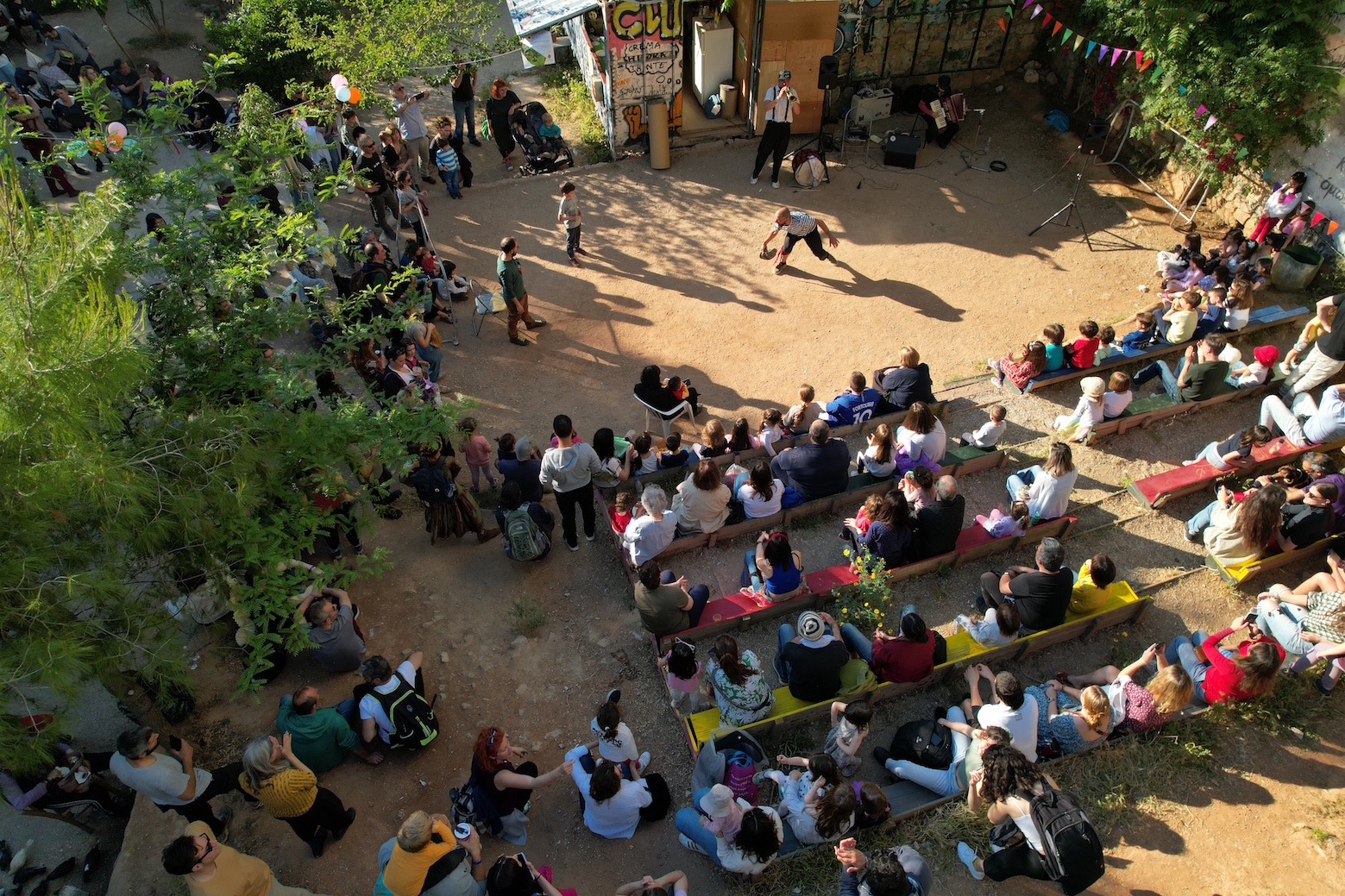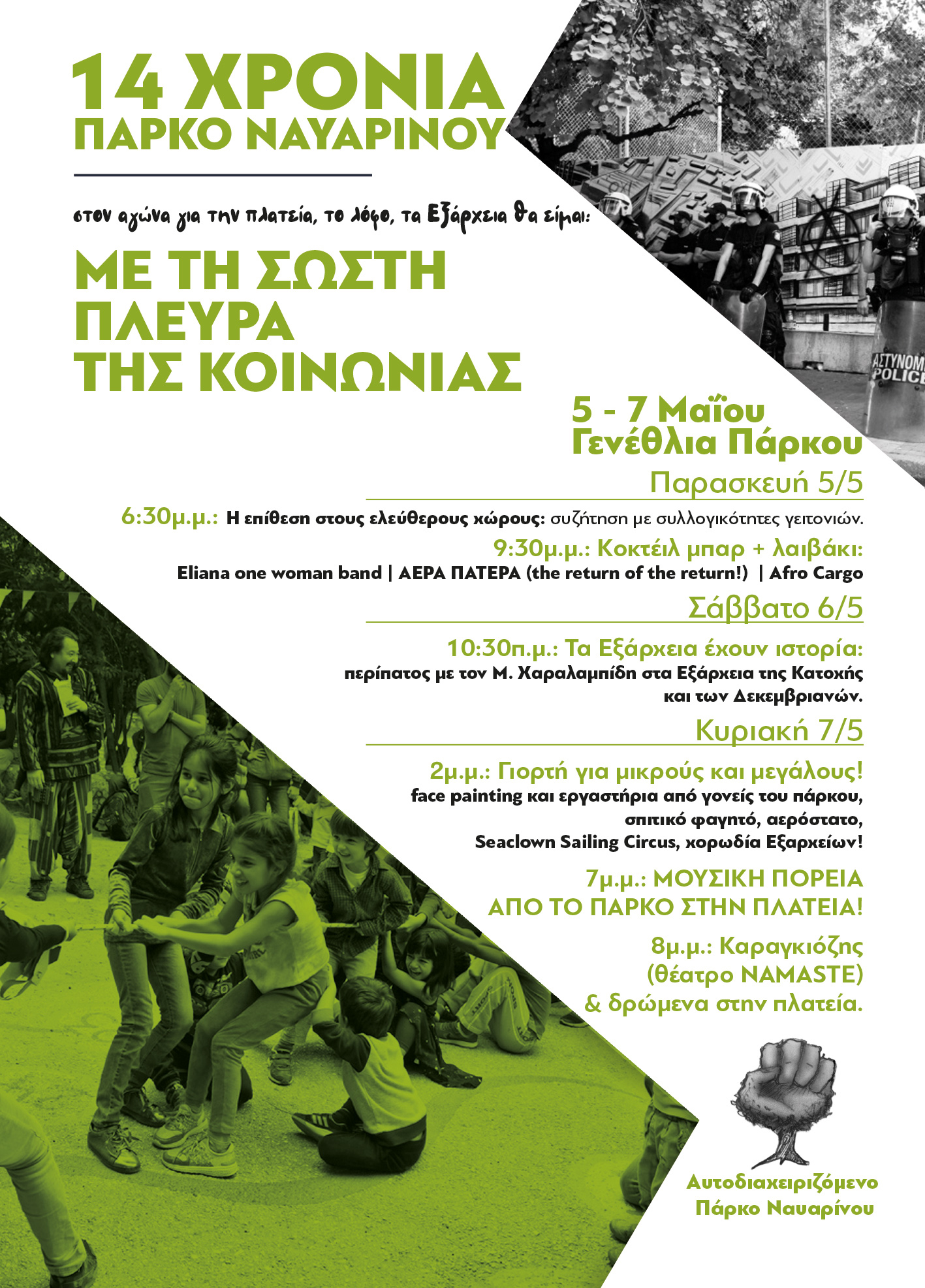Navarinou Park
Created on 03-10-2023 | Updated on 03-10-2023
Navarinou Park is a grassroots initiative set in motion by residents in the Exarchia neighbourhood of Athens. In March 2009, they took over an abandoned plot, which had formerly been used as a parking lot, and transformed it into a communal green space for play and recreational purposes, serving as a reference point for the residents. The management of the park follows a model of social self-governance, non-profit and non-property orientation, where the assembly serves as the primary decision-making instrument.
The park exemplifies an urban commons and a space of commoning. It is a space created and governed by the community of people who came together based on values of solidarity and openness, promoting the production of social capital. Going beyond the theoretical conceptualisations of urban commons, it offers a practical and self-sustainable mechanism for managing urban spaces through collective action. Its objective is to preserve the urban asset while fomenting participation, solidarity and enhancing the quality of life. Its long and turbulent history demonstrates the importance commitment and adaptability play in sustaining urban commons initiatives over time.
Initiating entity
Exarcheia Residents Initiative
Objectives
Bottom-up transformation of an empty plot into a self-managed community park
Educational/participatory methods
Occupation of public space; collective action; network development; activism; public campaigns; co-construction; co-creation; co-governance; commoning
Context
bottom-up reclaim of the city
Place
Exarcheia neighbourhood, Athens
Period
-
Duration
2009-
Stakeholders
Exarcheia Residents Initiative, activist groups, local residents
Object of study
Live Project
Description
Background
The neighbourhood of Exarcheia, where the park is located, is one of the most – if not the most– politically active areas in Athens and is traditionally home to intellectuals and artists. Since the 1970s, it has been in the centre of social movements, serving as a breeding ground for leftist, anarchist and antifascist grassroots and alternative cultural practices (Chatzidakis, 2013). Given its location in the centre of Athens, the neighbourhood is lacking green and open spaces.
The site of the park has a long history of negotiations regarding ownership and use, dating back to the 1970s. During that time, the Technical Chamber of Greece (TEE) purchased the 65-year-old medical clinic with the purpose of demolishing it and constructing its central offices. Although the building was eventually demolished in the 1980s, TEE never constructed its offices. In the 1990s, the site was offered as part of an exchange between the TEE and the Municipality of Athens for the development of a green space, but this agreement did not materialise. Instead, the TEE leased the plot for private use, and turned it into an open-air parking space (Frezouli, 2016).
The termination of the lease in 2008 coincided with a major social movement triggered by the assassination of a 15-year-old boy, Alexis Grigoropoulos, at the hands of the police. This tragic incident took place in December of the same year, just a few streets away from the site and led to uprisings in many Greek cities and neighbourhoods as citizens demanded the right to life, freedom, and the city through protests and illegal occupations. In response to the rumours about the site’s future construction, the Exarcheia Residents’ Initiative, in collaboration with many grassroots movements, used digital means to issue a collective call for action to reclaim the plot as an open green space. On 7th March 2009, tens of people from the neighbourhood and around Athens occupied the plot and created the 'Self-managed Navarinou and Zoodochou Pigis Park' (Frezouli, 2016; pablodesoto, 2010)
The park as an urban commons urban commons resource
The operation and development of the park, in terms of its uses and infrastructure, is collectively shaped by the appropriating community of commoners, consisting of activists and local residents, without any contributions from the state, municipal or private organisations. Hence the activities and interventions within the park are evolving with the joint efforts and time, work, skills and financial resources of the commoners.
In this regard, the transformation of the space from a parking lot into its present form has followed a dynamic process, that keeps adapting to the changing resources, needs and challenges created by the social and urban circumstances. The initial intervention involved replacing the concrete ground with soil and planting flowers and trees donated by the community. Subsequently, a small playground and seating areas were constructed, forming an open amphitheatre (Parko Navarinou Initative, 2018b). This infrastructure served as a base for organising public events such as cultural activities, public discussions, live concerts, film projections, and children’s activities. At a later stage, educational workshops on agriculture were also introduced (Frezouli, 2016). Many of the activities brought about spatial transformations within the park, including the creation of community gardens or sculptures, murals and installations.
In its most recent phase, the park has been transformed into a “big playground” for all the residents housing a variety of greenery, such as the urban gardens, as well as seating and gathering urban furniture, including benches and tables. The park now features several playground equipment suitable for both children and adults, such as swings, playing structures, a basketball court, and a ping pong table. Additionally, safety has been enhanced by improving the lighting and adding a fence (Parko Navarinou Initative, 2018a).
Commoners and commoning
To thrive as a bottom-up initiative, the operation and governance of the park are based on several forms of mobilisation that extend beyond the initial public space occupation. Among the various forms of commoning undertaken, activism, collective action, network creation and co-governance have been vital for Navarinou Park. These social processes have been supported by other participatory or community-based practices, such as public campaigns, co-construction and co-creation activities (Frezouli, 2016).
Since its beginning, the initiative has established an open assembly as the main instrument for decision-making on operational and infrastructural matters related to the park. This ensures that the park remains a shared resource, fostering a sense of belonging and strong bonds among the commoners. The assembly sets the rules and practises that constitute the institutional arrangements of the park, following a governance model based on horizontal democratic processes driven by the principles of self-management, anti-hierarchy and anti-commodification. The assembly is open to any individual or group that wishes to participate. However, throughout the park’s lifetime, only a small core of people remains permanently committed to the initiative. This groups is cohesive in terms of social incentives, activist ideals, and social capital, which reduces conflicts during decision-making processes (Arvanitidis & Papagiannitsis, 2020).
However, beyond addressing issues such as maintenance, organisation of events and infrastructure interventions, the assembly has been confronted with several challenges of both internal and external character, necessitating adaptability and rule-setting. One key challenge is the continuous commitment required for attending meetings and carrying out the daily tasks, which relies entirely on voluntary engagement. The gradual decrease in engagement, reaching its peak in early 2018 and even threatening the park’s survival, prompted the core team to seek new forms of communication and involvement to attract more residents to use and engage with the space. (Arvanitidis & Papagiannitsis, 2020). The idea that emerged focused on addressing the lack of play-areas in the neighbourhood by transforming the park into a large playground that would appeal to families, parents, children and the elderly. This vision was realised through a successful crowdfunding campaign (Parko Navarinou Initative, 2018a) that used the moto “play, breath, discuss, blossom, reclaim, live” to convey the key functions of the park.
Another significant challenge, especially during the first years of the initiative, was external delinquent behaviour, including vandalism, drug trafficking, and problems with the police (Avdikos, 2011). After several negotiations, the assembly decided to install a fence around the park to improve the monitoring and maintenance of the space while still keeping it open to everyone during operational hours and activities.
Impact & Significance
Navarinou Park is considered to be a successful example of the bottom-up transformation of an urban void into an urban commons among scholarly discourses (Arvanitidis & Papagiannitsis, 2020; Daskalaki, 2018; Frezouli, 2016; pablodesoto, 2010). It not only provides environmental benefits delivered through high quality green spaces, along with a variety of social and cultural activities for the residents of Exarcheia but, most significantly, it has "motivated and empowered residents, offering a great sense of pride and providing incentives for enhancing social capital and social inclusion, community resilience, collective learning and action"(Daskalaki, 2018, p. 162). The park demonstrates a successful example of urban commons in continuous growth, where social capital and solidarity are the motivating goals that drive both collective management and the ability to overcome challenges over time:
“If there is one thing that motivates us to move forward, it is the impact of our endeavour not only in theory but in practice: in the constructive transformation of behaviours, awarenesses, practices and everyday lives. It is up to us to seize the new opportunities that open up before us. If we ourselves do not struggle to create the utopias we imagine, they will never exist”. (Parko Navarinou Initative, 2018a)
Alignment with project research areas
Navarinou Park is aligned with RE-DWELL’s research area of Community Participation, specifically community planning, as it showcases an example of community organisation around a space to produce social capital. Furthermore, by using methods such as public space co-design and co-construction, as well as the creation and maintenance of community gardens, it also touches upon the area of Design, Planning and Building.
This is an example of a bottom-up initiative that is based on public space occupation which pushes legal boundaries. Consequently, the relationship with the state and formalised processes can be seen as one of tolerance as opposed to confrontational. Therefore, potential alignment with the RE-DWELL’s area of Policy and Financing would be irrelevant, although this case presents an alternative example of co-governance, engaging with the topic of vulnerable groups.
Alignment with SDGs
Based on the public profile of Navarinou Park, there is no deliberate relation to the SDG framework, especially as the values that form the objectives and operations of the park preceded the establishment of SDGs. However, upon examining the history and objectives of the park, links can be drawn with an interpretation of the SDGs that focus on a localised, neighbourhood level, rather than a macroeconomic, policy driven scale.
Accordingly, this case is an example of a bottom-up community initiative that works towards the SDG 11 Sustainable Cities and Communities, by providing a self-sustainable and inclusive social mechanism organised around urban space. Furthermore, it contributes to SDG 13 Climate Action as the provision of green spaces in the dense urban fabric has been the fundamental motive behind the park’s creation. Finally, the formation of a new type of institution of urban commons for the regeneration and governance of the park, based on solidarity, collaboration and network creation, is associated with SDG 16. Peace, justice and strong institutions and SDG 17. Partnerships for the goals.
In an indirect manner, the park’s programs and activities can be correlated to SDG: 2. No hunger, SDG3. Good health and well-being, and SDG 4. Quality Education, through the integration of mutual learning courses on sustainable urban agriculture.
References
Arvanitidis, P. A., & Papagiannitsis, G. (2020). Urban open spaces as a commons: The credibility thesis and common property in a self-governed park of Athens, Greece. Cities, 97(February 2019), 102480. https://doi.org/10.1016/j.cities.2019.102480
Avdikos, V. (2011). The political closeness of open public space ; reflections from ParkoNavarinou in Athens. International Critical Geography Conference, December.
Chatzidakis, A. (2013). Commodity fights in Post-2008 Athens: Zapatistas coffee, Kropotkinian drinks and Fascist rice. Ephemera, 13(2), 459–468. http://search.proquest.com/docview/1428932685?accountid=10297%5Cnhttp://sfx.cranfield.ac.uk/cranfield?url_ver=Z39.88-2004&rft_val_fmt=info:ofi/fmt:kev:mtx:journal&genre=article&sid=ProQ:ProQ:abiglobal&atitle=Commodity+fights+in+Post-2008+Athens:+Zapatist
Daskalaki, M. (2018). Alternative organizing in times of crisis: Resistance assemblages and socio-spatial solidarity. European Urban and Regional Studies, 25(2), 155–170. https://doi.org/10.1177/0969776416683001
De Soto, P. (2010, December 8). Navarinou Park. In Mapping the Commons. https://mappingthecommons.net/en/blog/2010/12/08/navarinou-park/
Frezouli, E. (2016). Self-organized Park Navarinou and Zoodochou Pigis str., Greece. Environmental Justice Atlas. https://ejatlas.org/conflict/self-organised-park-navarinou-and-zoodochou-pigis-str
Parko Navarinou Initiative. (2018a). Support Parkonavarinou. FireFund. https://www.firefund.net/parkonavarinou
Parko Navarinou Initiative. (2018b). Η ιστορία του πάρκου Ναυαρίνου - The story of Parko Navarinou. Youtube. https://www.youtube.com/watch?v=mFlITzqRBWY
Related vocabulary
Co-creation
Community Empowerment
Participatory Approaches
Placemaking
Social Sustainability
Spatial Agency
Urban Commons
Area: Community participation
Created on 16-02-2022
Read more ->Area: Community participation
Created on 03-06-2022
Read more ->Area: Community participation
Created on 17-02-2022
Read more ->Area: Community participation
Created on 08-11-2023
Read more ->Area: Community participation
Created on 03-06-2022
Read more ->Area: Community participation
Created on 30-01-2024
Read more ->Area: Community participation
Created on 14-10-2022
Read more ->Blogposts
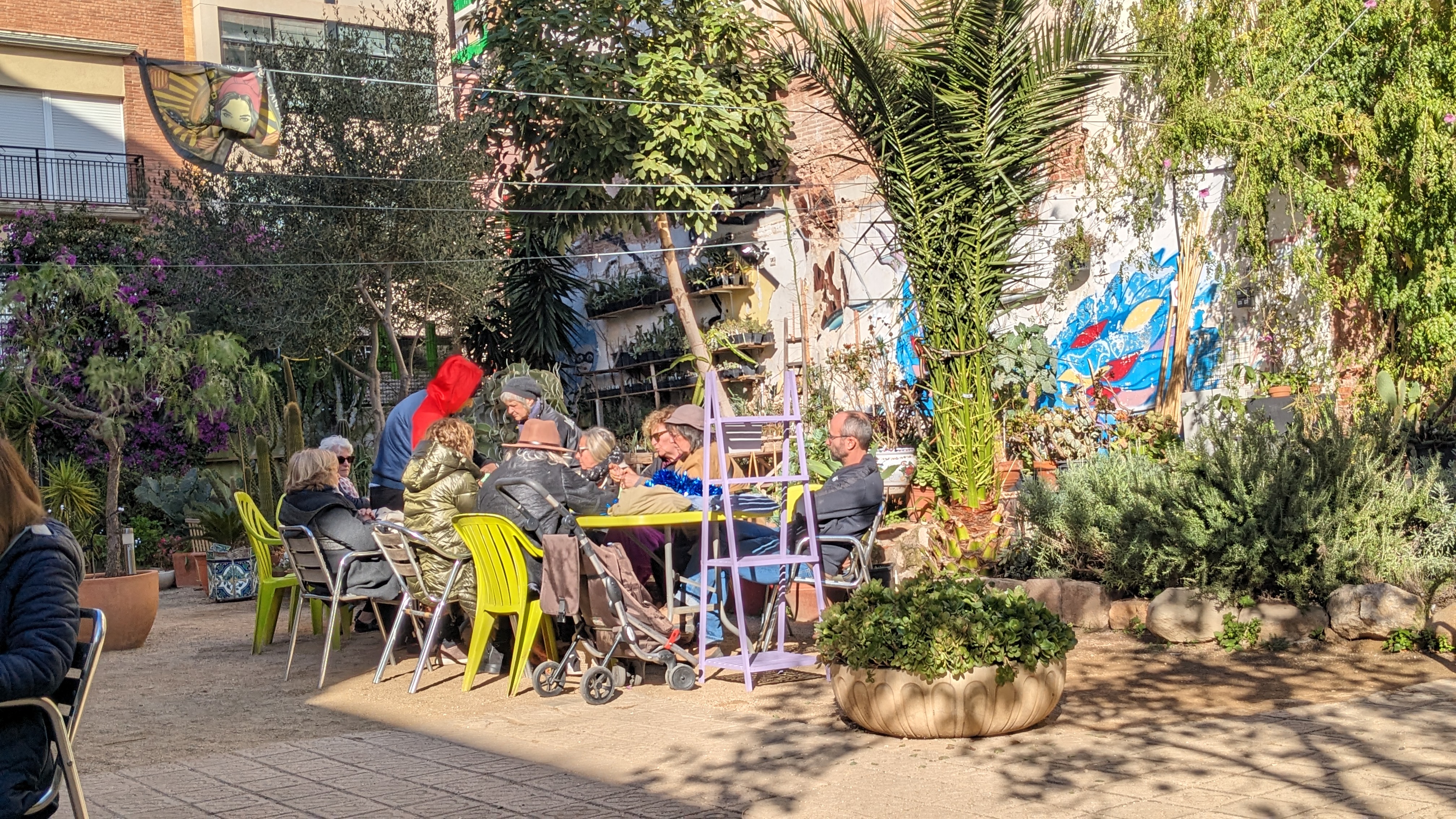
Exploring the Panorama of Barcelona's Urban Commons and the Dynamic State Relationships
Posted on 22-01-2024
Secondments
Read more ->
